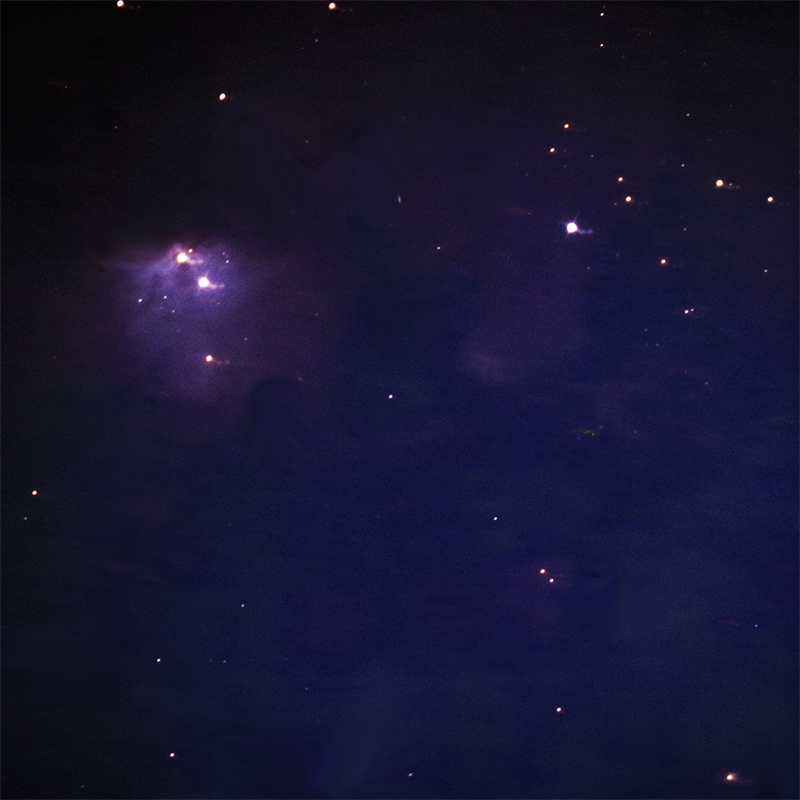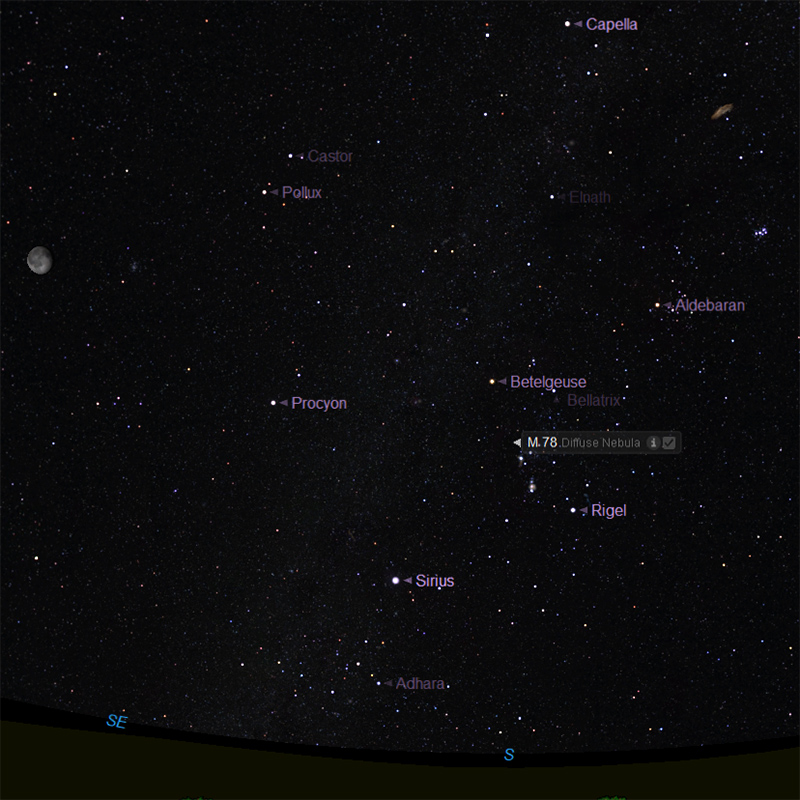M78

Credits: Keith Turnecliff, Long Itchington
Messier 78 (M78) is a reflection nebula located in the northern constellation Orion, the Hunter.
M78 is the brightest diffuse reflection nebula in the sky. It has an apparent magnitude of 8.3 and lies at an approximate distance of 1,600 light years from Earth.
It has the designation NGC 2068 in the New General Catalogue.
The nebula can easily be seen in large binoculars and small telescopes, which show a hazy, comet-like patch of light with two 10th magnitude stars that illuminate it.
M78 is also visible in 10×50 binoculars as a dim patch, but it requires clear, dark skies to be seen.
4-inch telescopes will sometimes reveal the haze around M78 and also show the nearby reflection nebula NGC 2071 under good conditions.
8-inch telescopes begin to show the details of M78. A 9th magnitude open cluster, NGC 2112, can be seen about 1.75 degrees east of the nebula.
The cluster lies in the background and is some 2,800 distant.
Facts about M78 by Keith Turnecliff
Infrared observations of M78 have revealed that at least 192 stars have formed within the molecular cloud associated with the nebula. The best time of year to observe M78 is during the winter, when Orion is high in the sky.

Best viewed with resolution 6248 x 4176.
Credits: Image courtesy of Starry Night Pro Plus 8, researched and implemented by Keith Turnecliff.